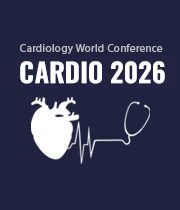Congenital Heart Diseases
The complexity of congenital heart diseases lies in the wide range of defects affecting the heart’s anatomy and blood flow. Some conditions, such as patent ductus arteriosus, may resolve spontaneously, while others demand intricate surgical repairs or catheter-based interventions. The integration of 3D imaging and artificial intelligence has significantly improved the precision of preoperative planning and patient-specific therapies. Beyond childhood, ongoing research highlights the importance of lifelong monitoring and care to address potential complications in adulthood. This field not only advances medical treatments but also fosters multidisciplinary approaches that prioritize patient-centered care for individuals with congenital heart diseases.

Arthur J Siegel
Massachusetts General Hospital, United States
Sergey Suchkov
N. D. Zelinskii Institute for Organic Chemistry of the Russian Academy of Sciences, Russian Federation
Narendra Kumar
HeartbeatsZ Academy, United Kingdom
Arthur J Siegel
Massachusetts General Hospital, United States
Yong Xiao Wang
Albany Medical Center, United States
Narendra Kumar
HeartbeatsZ Academy, United Kingdom



Title : Investigating the long-term follow up of atrial septal device closures in wales and england: A comparative analysis with Major Adverse Cardiovascular Events (MACE)
Meera Gopinath, Cardiff University Medical School, United Kingdom
Title : An adult case of polysplenia syndrome associated with sinus node dysfunction
Apoorva Tripathi, Oxford University Hospitals, United Kingdom
Title : Yasser’s criterion of inferior ST-segment discrepancy deviations in AF with aberrancy and Sgarbosa criteria - a new cardiovascular discovery and management - a case report
Yasser Mohammed Hassanain Elsayed, Egyptian Ministry of Health, Egypt
Title : Successful treatment of sinus of valsalva aneurysm
Aina Jarillo, Universidad Anahuac Mexico Norte, Mexico
Title : Metabolic and echocardiographic predictors of ventricular extrasystoles burden in non-ischemic patients
Ahmed Ahmed Mohamed Hassan, Al-Azhar Medical School, Egypt
Title : Young hearts at risk: Hidden cardiovascular damage and the role of social determinants of health among youth with type 1 diabetes in Kenya
Phoebe Wamalwa, Ministry of Health, Kenya